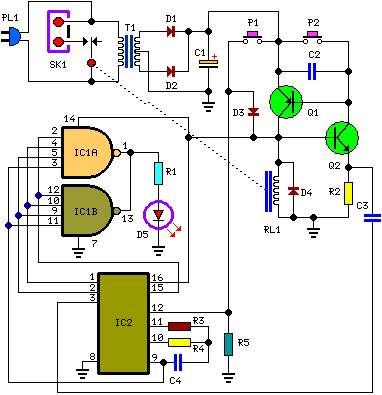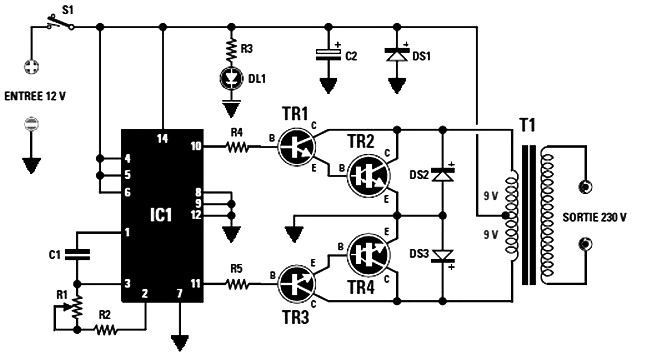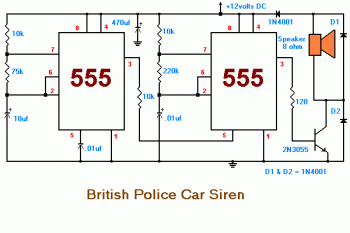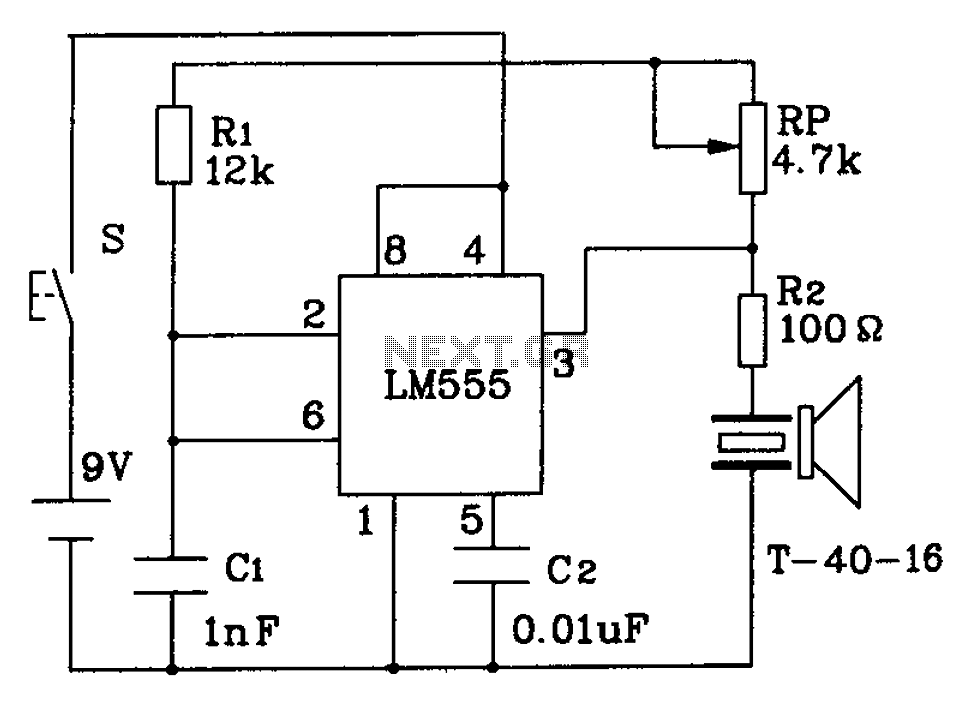
A Bedside Lamp Timer Circuit

This circuit is designed to power a lamp or other appliance for a specified duration of 30 minutes, after which it automatically turns off. It is particularly useful for nighttime reading, as it can turn off a bedside lamp if the reader falls asleep. Upon activation via the P1 pushbutton, an LED lights up for approximately 25 minutes. Subsequently, the LED begins to blink for two minutes, pauses for another two minutes, and then resumes blinking for an additional two minutes before the lamp is switched off, providing a visual signal that the on-time is nearing its end. Users can extend the reading time by pressing the P1 button again, which adds another half-hour of illumination. The lamp can also be turned off at the user's discretion by pressing the P2 button.
The circuit utilizes a microcontroller or a timer IC to manage the timing functions. The P1 pushbutton initiates the timing sequence, activating the lamp and illuminating the LED. The LED serves as a visual indicator of the remaining time, enhancing user awareness. The blinking pattern of the LED is programmed to provide clear signals as the end of the 30-minute duration approaches.
The circuit may include a relay or a solid-state switch to control the power to the lamp, ensuring safe operation with higher voltage appliances. The P2 pushbutton is connected to the microcontroller, allowing for immediate interruption of power to the lamp when pressed.
Power supply considerations are also essential, with the circuit likely requiring a regulated DC supply to ensure stable operation of the microcontroller and other components. Capacitors may be included for filtering purposes, while resistors can be used to limit current to the LED and protect the microcontroller inputs.
In summary, this circuit combines user-friendly features with practical timing functions, making it an effective solution for automatically controlling bedside lighting during nighttime reading sessions.The purpose of this circuit is to power a lamp or other appliance for a given time (30 minutes in this case), and then to turn it off. It is useful when reading at bed by night, turning off the bedside lamp automatically in case the reader falls asleep After turn-on by P1 pushbutton, the LED illuminates for around 25 minutes, but then it starts to blink for two minutes, stops blinking for two minutes and blinks for another two just before switching the lamp off, thus signaling that the on-time is ending.
If the user want to prolong the reading, he/she can earn another half-hour of light by pushing on P1. Turning-off the lamp at user`s ease is obtained by pushing on P2.. 🔗 External reference
The circuit utilizes a microcontroller or a timer IC to manage the timing functions. The P1 pushbutton initiates the timing sequence, activating the lamp and illuminating the LED. The LED serves as a visual indicator of the remaining time, enhancing user awareness. The blinking pattern of the LED is programmed to provide clear signals as the end of the 30-minute duration approaches.
The circuit may include a relay or a solid-state switch to control the power to the lamp, ensuring safe operation with higher voltage appliances. The P2 pushbutton is connected to the microcontroller, allowing for immediate interruption of power to the lamp when pressed.
Power supply considerations are also essential, with the circuit likely requiring a regulated DC supply to ensure stable operation of the microcontroller and other components. Capacitors may be included for filtering purposes, while resistors can be used to limit current to the LED and protect the microcontroller inputs.
In summary, this circuit combines user-friendly features with practical timing functions, making it an effective solution for automatically controlling bedside lighting during nighttime reading sessions.The purpose of this circuit is to power a lamp or other appliance for a given time (30 minutes in this case), and then to turn it off. It is useful when reading at bed by night, turning off the bedside lamp automatically in case the reader falls asleep After turn-on by P1 pushbutton, the LED illuminates for around 25 minutes, but then it starts to blink for two minutes, stops blinking for two minutes and blinks for another two just before switching the lamp off, thus signaling that the on-time is ending.
If the user want to prolong the reading, he/she can earn another half-hour of light by pushing on P1. Turning-off the lamp at user`s ease is obtained by pushing on P2.. 🔗 External reference





